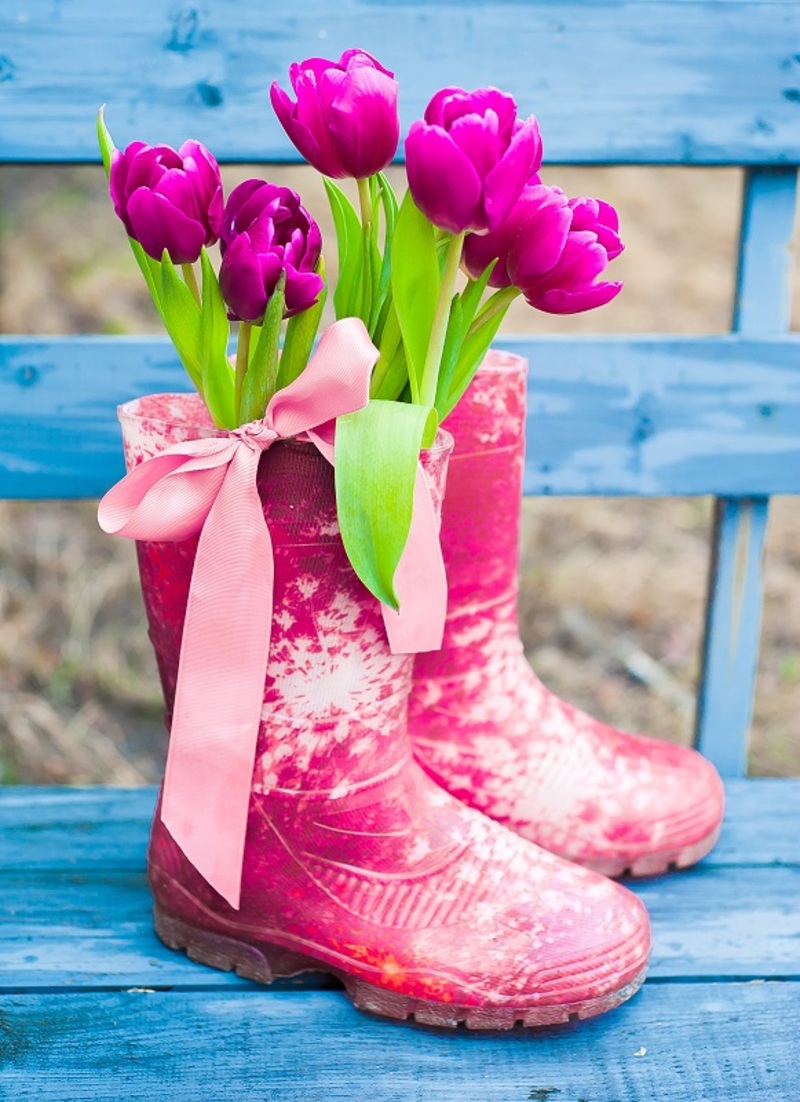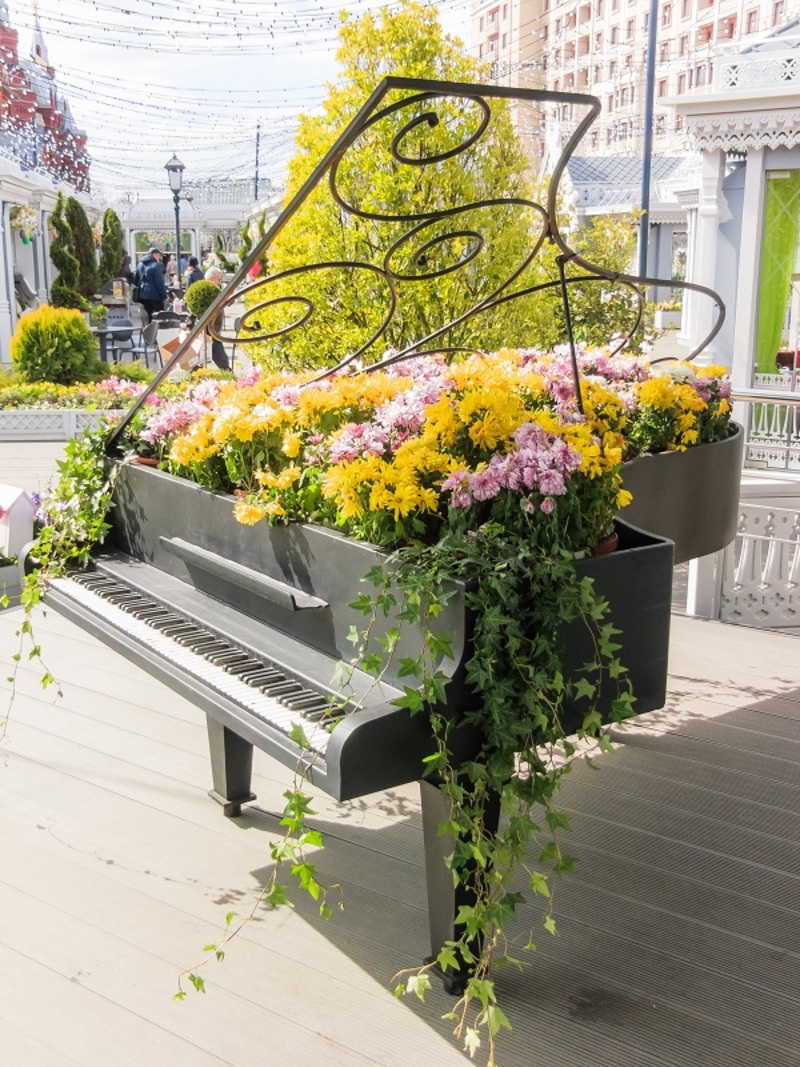How to Care for Poinsettias and Keep Them Beautiful Longer
Posted on 13/09/2025
How to Care for Poinsettias and Keep Them Beautiful Longer
The festive season is never quite complete without vibrant Poinsettias brightening up our homes, offices, and public spaces. Famous for their bold bracts--often mistaken for petals--these gorgeous holiday plants are a symbol of joy, celebration, and warmth. If you've ever wondered how to care for Poinsettias and extend their beauty well beyond the holidays, this comprehensive guide will provide you with expert tips to keep your Poinsettias healthy, colorful, and thriving for months!
Why Poinsettias Make Perfect Festive Plants
Native to Mexico, Poinsettias (Euphorbia pulcherrima) are cherished worldwide for their striking, velvety "petals" and cheerful presence, especially during Christmas. While red is the classic color, Poinsettias now come in shades of pink, white, cream, yellow, marbled, and even speckled varieties.
Learning how to take care of Poinsettias ensures they remain vibrant and lively throughout the holiday season--and sometimes even rebloom next year!

Getting Started: Selecting the Best Poinsettia
The first step to care for your Poinsettia is choosing a healthy plant from the outset. Whether you're shopping at a local nursery or a supermarket, look for these important features:
- Vivid, Unsullied Bracts: The colored bracts should have no blemishes, tears, or discoloration.
- Firm Leaves: Foliage should be plentiful and deep green. Avoid wilted, yellowing, or dropping leaves.
- Intact True Flowers: The true flowers are the small yellow buds (cyathia) at the center of each cluster; select plants where these are still tightly closed.
- No Pests or Mold: Inspect leaves, bracts, and soil for signs of insects, webbing, powdery mildew, or black spots.
Avoid purchasing cold-damaged Poinsettias. These sensitive plants suffer if exposed to cold drafts in transit--wrap them in paper sleeves and never expose them to temperatures below 50?F (10?C).
How to Care for Poinsettias at Home: Proven Tips
With the right conditions, Poinsettia care is simple and rewarding. The following essential aspects will help keep your plant looking beautiful long after the holidays.
1. Light: Find the Sweet Spot
Poinsettias love plenty of natural, indirect light. Place your plant near a window with filtered sunlight for at least 6 hours per day. Direct sun may scorch bracts and leaves, while too little light leads to rapid fading and leaf drop.
- Best Spot: East- or west-facing windows offer ideal light levels
- Avoid: Drafty windows or sill ledges that get too cold or hot
2. Temperature & Humidity: Keep Conditions Stable
How to care for a Poinsettia's climate needs? Maintain a temperature range of 60-72?F (15-22?C) during the day and no lower than 55?F (13?C) at night. Sudden chills or hot air from heating vents can trigger leaf drop.
- Avoid placing Poinsettias near radiators, heating vents, fireplaces, or frequently opened doors.
- Humidity: Dry indoor air--especially in winter--can harm your plant. Boost humidity using a pebble tray with water or a room humidifier.
3. Watering: Don't Drown or Dry Out
Knowing how to water Poinsettias is key to their longevity. Both overwatering and underwatering can cause severe problems.
- Check the soil moisture: Press your finger into the top inch of the soil; if it feels dry, it's time to water.
- Water thoroughly: Use room-temperature water and let excess drain completely--never let the pot sit in water.
- Reduce watering frequency: As winter progresses and the plant's growth slows, check less often.
- Signs of improper watering: Yellow leaves and leaf drop may signal root rot from soggy soil; wilting or crispy leaves indicate dehydration.
4. Feeding and Fertilizing for Lasting Color
Poinsettias don't need fertilizer while blooming. However, if you want your plant to last long after the holidays and potentially rebloom, start feeding it about once a month in late winter to spring with a balanced all-purpose houseplant fertilizer diluted to half strength.
- Do NOT fertilize: While the plant is in full bloom (November to January).
- Start feeding: When new growth begins as the days lengthen.
5. Potting and Soil: Choose Right for Healthy Roots
Poinsettias thrive in well-draining, light potting soil. Most store-bought plants arrive in plastic pots with adequate drainage holes.
- Repot (if needed): If the root ball is crowded or you see roots protruding from the base.
- Soil type: Use a peat-based potting mix blended with perlite or coarse sand.
- Always remove foil or decorative sleeves for watering, as these can trap excess moisture.
6. Protecting Your Poinsettia from Pests & Disease
Regularly inspect your Poinsettia for pests like whiteflies, spider mites, aphids, and fungus gnats. Early detection prevents infestations that can rapidly weaken the plant.
- Wipe leaves with a damp, clean cloth once a week
- Check undersides of leaves for sticky residue, webbing, or tiny insects
- Treat pests early: Use insecticidal soap or a neem oil spray at the first sign of trouble.
Fungal issues like powdery mildew or root rot usually come from overwatering or insufficient airflow--adjust your care accordingly.
How to Make Poinsettias Last Beyond the Holidays
Most people treat Poinsettias as disposable holiday decor. However, with attentive Poinsettia plant care, you can prolong their life well into the new year--and even encourage a repeat show next winter!
After the Holidays: What to Do Next
- Maintain light, temperature, and watering as described above.
- Expect gradual leaf shedding: Some bracts and leaves will naturally drop as the plant transitions from the blooming period to rest.
- Pruning: In early spring (March or April), prune stems back to 4-6 inches above the soil. This encourages new, bushy growth.
Encouraging Your Poinsettia to Bloom Again: Step-by-Step
Poinsettias are photoperiodic--they require specific light and darkness cycles to rebloom. Here's a proven plan for year-round Poinsettia care:
-
Spring:
- After pruning in spring, continue regular watering and fertilization.
- When temperatures reach 60?F (15?C), move your Poinsettia outdoors in partial shade (protected from strong sun and wind).
-
Summer:
- Water and feed as needed. Pinch/prune new growth every 4-6 weeks for a bushier plant.
-
Fall:
- In late September or early October, bring Poinsettias back inside before night temperatures drop below 55?F (13?C).
- Initiate "flower-forcing" period: For 8-10 weeks, give the plant at least 14 hours of total darkness every night (cover it with a cardboard box, opaque bag, or place in a dark closet from 5pm-8am). During the day, provide bright, indirect light.
-
Winter:
- When bracts color up, resume gorgeous display in your favorite indoor spot!
Consistency is vital. Even a single night's exposure to light during flower-forcing may disrupt the entire bloom process.
Troubleshooting Common Poinsettia Problems
-
Wilting or yellow leaves?
- Check for overwatering or underwatering as the primary cause.
-
Falling Bracts?
- Cold drafts, sudden temperature changes, or insufficient light may be to blame.
-
Pest Infestation?
- Isolate the affected plant and treat promptly with neem oil or insecticidal soap.
-
Droopy Stems?
- This may occur if the plant sits in waterlogged soil, leading to root rot.
Are Poinsettias Poisonous to Pets and People?
A common myth is that Poinsettias are highly toxic. In reality, they are only mildly irritating to pets and people if ingested in large quantities.
- Poinsettias contain a milky sap that may cause mild stomach upset, drooling, or vomiting in pets or humans.
- Keeping them out of reach of curious children and pets is the best preventive measure.
Creative Display Tips to Highlight Your Poinsettias
- Group plants of varying sizes and colors for a lush, opulent holiday display.
- Mix and match planters in festive themes--think baskets, metallic pots, or rustic ceramics.
- Pair Poinsettias with complementary winter flowers, evergreens, or fairy lights for extra charm.
- Be mindful not to let decorative foil cover the drainage holes.

Frequently Asked Questions: Poinsettia Plant Care
- Can Poinsettias rebloom every year?
Yes! It takes effort, including pruning, regular feeding, and controlled light cycles, but your Poinsettia can bloom for multiple seasons. - How long do Poinsettias last indoors?
With proper care, Poinsettias can last from 2-to-6 months as decorative houseplants before going dormant. - Should I mist my Poinsettia?
Misting isn't usually necessary, but increasing humidity around the plant helps prevent leaf drop during dry winters. - Is it better to buy a large or small Poinsettia?
Either size thrives with the correct care, but larger plants may adapt better to home conditions.
Conclusion: Keep Your Poinsettias Thriving Longer
Poinsettias aren't just fleeting holiday decor--they can be cherished houseplants with the right attention and know-how. Master Poinsettia care at home by providing optimal light, moisture, temperature, and a little patience. Follow these Poinsettia maintenance tips to keep their colors bright and leaves lush long after the festivities. Who knows? You may even enjoy your Poinsettia's brilliant blooms next Christmas, too!
Happy growing, and may your Poinsettias shine bright all year round!
Latest Posts
Easy Flower Preservation: Three Methods Anyone Can Try
Curious About Tulips Here Are 7 Facts That Might Surprise You
Unveiling the Emotional Benefits of Surrounding Yourself with Flowers
The Language of Birth Flowers and What Yours Tells the World About You






